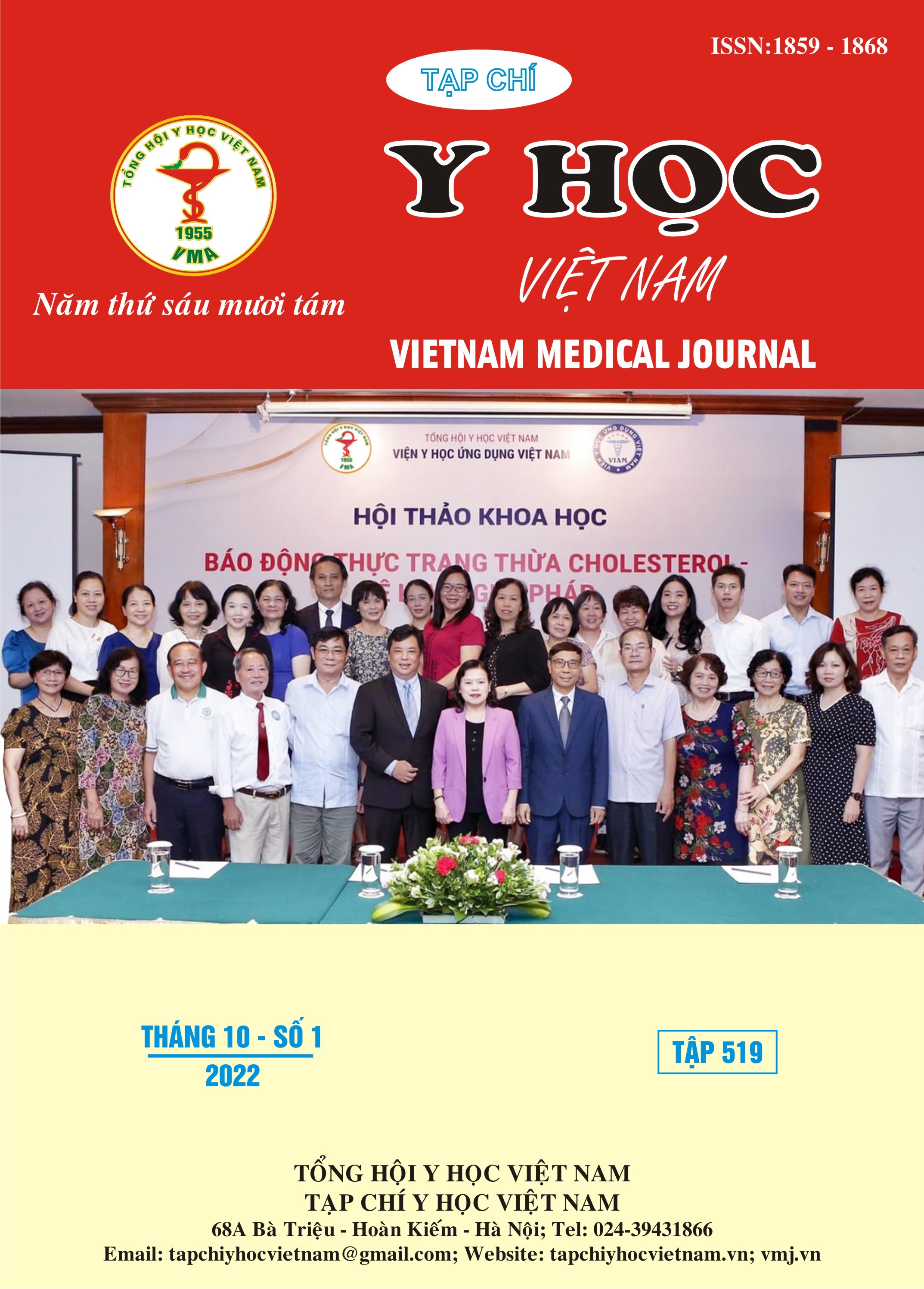PRESCRIPTION PATTERN ANALYSIS OF CARBAPENEM IN PHU THO PROVINCE HOSPITAL IN 2021
Main Article Content
Abstract
Carbapenem antibiotics are currently the most broad-spectrum antibiotics, effective against strains of bacteria that are resistant to other β-lactam antibiotics (Gram-negative bacteria produce extended-spectrum beta-lactamases (ESBL)). A retrospective study describing the status of group antibiotic prescribing based on data obtained from 520 medical records of patients treated from January 2021 to June 2021 at Phu Tho Provincial General Hospital. The level and trend of drug consumption were analyzed based on data collected from January 2019 to December 2021. The study results showed that the consumption level of carbapenem antibiotics through the number of doses of DDD/100 days of treatment in the period from January 2019 to December 2021 tend to increase (tau = 0.867, p<0.05). In 520 research cases, carbapenem was used mainly in the form of an empiric antibiotic regimen (89.6%), of which the initial treatment regimen was in accordance with the recommendations, accounting for 65.2%, Alternative treatment regimens in accordance with recommendations accounted for 88.3%. In the group of patients who did not need to adjust the dose of carbapenem according to renal function, 60.0% of patients used imipenem and 22.5% of patients used meropenem at a dose that did not meet the recommendations. Similarly, for patients requiring dose adjustment according to renal function, only 54.1% of patients receiving imipenem and 35.3% of patients receiving meropenem had doses consistent with the recommendations. The study proposes the application of a detailed carbapenem antibiotic use management program at the hospital, which clearly specifies the permissible indications of carbapenem in the empiric regimen (initial treatment regimen, alternative) and dosing guidelines are based on individualized treatment, using a strategy of optimizing dose regimens based on the principles of pharmacokinetics/pharmacodynamics (PK/PD).
Article Details
References
2. Bộ Y tế (2018), Dược thư quốc gia Việt Nam, chuyên luận Imipenem, Meropenem, NXB Y học, Hà Nội, pp. 800-802, 950-952.
3. Agency European Medicines (2017), "Antimicrobial resistance", Retrieved 20/8/2017, from http://www.ema.europa.eu/ ema/ index. jsp?curl=pages/special_topics/general/general_content_000439.jsp&mid=WC0b01ac0580a7815d, pp.
4. Electronic Medicines Compendium (eMC) (2016), "Summary of product characteristics: Meronem IV 500mg & 1g, Imipenem/cilastatin.", pp.
5. FDA ""PRIMAXIN® I.V. ", Retrieved, from https://www.accessdata.fda.gov/drugsatfda_docs/label/2008/050587s065,050 630s028lbl.pdf.", pp.
6. Gerald K. (2008), "AHFS Drug information, American Society of Health System.", pp.
7. Golightly Larry K. et al. (2013), "Renal Pharmacotherapy," pp. 257,437.
8. Ikawa Kazuro, Morikawa Norifumi, et al. (2008), "Development of breakpoints of carbapenems for intraabdominal infections based on pharmacokinetics and pharmacodynamics in peritoneal fluid", Journal of Infection and Chemotherapy, 14(4), pp. 330-332.
9. Roberts J. A., Lipman J. (2009), "Pharmacokinetic issues for antibiotics in the critically ill patient", Crit Care Med, 37(3), pp. 840-51.


